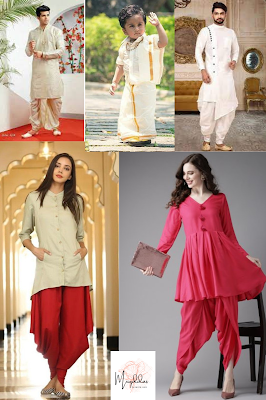Indian Traditional Dresses
Normally dresses of Amer India diverge from one bit of the country to another constructed on culture, climate, ethnicity, and geography. In the age of proliferation and westernization, India has been directed to preserve its culture through the costume worn. Customary Indian dresses are especially major in celebrations such as festivals and weddings.
Fashion in India: -
Clothes put on in India have advanced over time. The impacts of British colonization, and the establishment of Islam, have been clear in Indian costumes throughout history. Craze in India became a general phenomenon after independence, especially in the late 1980s across to the 1990s. Through this time, India was revealed as a global craze and a lucrative thunder fueled the extension of the industry. Materialize Indian designers unified both old and western portions and perfected the art of adornment to make assertion garments. The flourishing Bollywood industry also donated much to the boom of India’s craze industry.There are some types of Indian Traditional Dresses: -
1: Indian Sari: -
The Indian Sari is a customary dress for Amerindian women. It is contained in one piece of textile which is five to nine foundry long and two to four feet broad. The material is muffled in a diversity of ways hanging on the occasion. The fabric is commonly muffled around the midriff while the other end is cloaked over the shoulder such that the waistline is left bare. The dress's history is discovered back as early as the Indus Valley Civilization. Amerindian people selected to wrap themselves in cotton fabrics due to the plasticity it allowed and the hot weather. The dress has progressed over time, and it is put on by an estimated 75% of Amer Indian women every day.
2: Lehenga Choli: -
3: Shalwar Kameez and Churidar Pajama: -
The Shalwar Kameez and Churidar Pajama orchestra started as a comfortable and decent put-on for Amerindian women in Kashmir and Punjab. It is one of the mass commonly put-on female dresses among the established dresses in India. The dress comprises pajama-like trousers called shalwar, which are made compact at the ankles and waist. A shirt, which is a large and loose-fitting dress, is put on over the shalwar. A churidar pajama may be put on in place of the shalwar and fits more firmly at the ankles, hips, and waist. Craze designers, along with the use of appealing patterns, embroidery, and grains have made these clothes wonderfully popular in India.
4: Panche or Lungi: -
5: Dhoti: -
6: Bandhgala: -
The Bandhgala is also mentioned as Jodhpuri, and it is a customary AmerIndian suit put on by men. The garment is known as Jodhpur afterward it began from the plight of Jodhpur through the British profession. The cloth is a Western design coat and trousers but with Amerindian embroidery and pattern. Every often the ensemble includes a vest. The garments jacket is mainly signalized by embroidered buttons and a lining at the neckband. Contemplated to be an in-vogue option among the customary clothes of Amer-India, the suit is put on both for formal and informal memories, and it is generally represented in Bollywood films.
7: Angarkha: -
The Angarkha was an elderly AmerIndian court dress, famous for its elasticity and ease. The outfit contains an upper garment that coincides and can anyone be trussed on the right or left shoulder. The garment can one or other be enlarged or cut short and can be put on over tops or jackets. The clothing is specified by a round-edged triangular aperture on the front side and the inside panel, mentioned as the parda, shields the chest area and is palpable through the aperture. The garment’s pattern, cut, and surface differ with the region, and it is mass approved in Gujarat and Rajasthan.
8: Achkan or Sherwani: -
Achkan is a customary knee-length jacket put on in Amer India. The garment was a gothic court put on for men, and it has advanced over time to become current put on. The Achkan has an anterior orifice and side orifice, which were normally tied with cords. Achkan comprises AmerIndian adornment, and it is mainly won with either a churidar pajama or dhoti. The garment is pre-owned for both formal and informal situations although it is normally a glimpse at weddings and other celebrations.9: Jama: -
The Jama exterior garment was publicized through the Mughal Empire. The clothes shape imitates a coat, and it has dense underwear and a skirt that dazzles out from the middle. The Jama has extended sleeves and the tether is secured under the underarm. The clothes ends are adorned differently from the relax of the fabric. Slighter was popular among the normal garments in Amer India, the Jama is mainly put on in the Kutch region of Rajasthan and Gujarat where it has been improved over the years to the unalike formation of costume.

.png)








.png)


.png)
0 Comments
If you have any query or doubts, So please let me know 😊